This article was co-authored by Lydia Shedlofsky, DO. Dr. Lydia Shedlofsky is a Resident Dermatologist who joined Affiliated Dermatology in July of 2019 after completing a traditional rotating internship at Larkin Community Hospital in Miami, Florida. She earned a Bachelor of Science in Biology at Guilford College in Greensboro, North Carolina. After graduation, she moved to Beira, Mozambique, and worked as a research assistant and intern at a free clinic. She completed a Post-Baccalaureate program and subsequently earned a Master's Degree in Medical Education and a Doctorate of Osteopathic Medicine (DO) from the Lake Erie College of Osteopathic Medicine.
There are 10 references cited in this article, which can be found at the bottom of the page.
wikiHow marks an article as reader-approved once it receives enough positive feedback. This article received 16 testimonials and 100% of readers who voted found it helpful, earning it our reader-approved status.
This article has been viewed 342,036 times.
Cellulitis is an infection of the skin that can develop when your skin breaks due to a cut, scrape or injury and is exposed to bacteria. Streptococcus and staphylococcus are the most common types of bacteria that lead to cellulitis, which is characterized by a warm, red, itchy rash that spreads and causes a fever. When cellulitis is not properly treated, it can lead to complications such as sepsis bone infection, meningitis or lymphangitis. Therefore, if you spot the early symptoms of cellulitis, it's important to get medical attention right away.[1]
Steps
Getting Diagnosed
-
1Be aware of the risk factors. Cellulitis is a skin infection that usually occurs on the lower legs or shins. It is caused by the spread of a bacterial infection, usually streptococcus or staphylococcus. There are several risk factors that make it more likely for these bacteria to find an entry point into your skin.[2]
- An injury in the the affected area. A cut, burn, or scrape breaks the skin and provides a way in for bacteria.
- A skin condition like eczema, chicken pox, shingles, or patches of very dry skin. Since the outer layer of skin isn't intact, bacteria are more likely to enter the skin.
- A compromised immune system. If you have HIV/AIDS, diabetes, kidney disease, or another condition that affects your immune system, you're more susceptible to getting a skin infection.
- Lymphedema, a chronic swelling of the legs or arms. It can cause the skin to crack, leading to infection.
- Obesity has been connected to an elevated risk of getting cellulitis.
- If you have had cellulitis in the past, you are prone to develop it again.
-
2Look for the symptoms and signs. Cellulitis is most often noticeable as a red, itchy rash that begins to spread in an area where your skin is damaged. If you notice a rash spreading near a cut, burn or area where the skin has been broken, especially if it's located on your lower legs, it may be cellulitis. Look for the following symptoms:
- A red, itchy, warm rash that continues to spread and swell. The skin may look tight and stretched.
- Pain, tenderness or soreness near the site of the infection.
- Chills, fatigue and fever as the infection advances.
Advertisement -
3Confirm the diagnoses of cellulitis. If you notice symptoms of cellulitis, even if the rash hasn't spread very far, it's important to see a doctor right away. That's because if it's allowed to progress, cellulitis can lead to serious complications. Cellulitis may also be an indication that a deeper, more dangerous infection is spreading.[3]
- When you visit the doctor, explain your symptoms and any signs of cellulitis that you've noticed.
- In addition to conducting a physical examination, your physician may perform additional tests such as a complete blood count (CBC) or blood culture.
- Cellulitis should always be taken seriously, especially in people with underlying medical conditions such as diabetes.[4]
Coping With Cellulitis
-
1Protect those around you. MRSA (methicillin-resistant Staphylococcus aureus) is becoming more common and it is contagious.[5] [6] Do not share any personal items, such as razors, towels, or clothing. Also, make sure that anyone who cares for your cellulitis wears gloves before touching you cellulitis and before touching anything that might be contaminated.[7]
-
2Wash your cellulitis. Wash with regular body soap and water, and rinse. You can then wrap a cool, damp cloth around the cellulitis to make it more comfortable. You should still make a doctor's appointment, but washing will help keep the infection from spreading.[8]
-
3Cover your wound. Until your skin scabs over, you need to protect the open wound. Apply a bandage, and change it once daily. This will help keep you protected while your body is building up natural defenses.
-
4Wash your hands regularly. You don't want to spread additional bacteria to your vulnerable wound. You also don't want to risk transmitting bacteria to another open wound on your body. Make sure to wash your hands before and after you are treating your wound.
-
5Take simple pain medications. If your wound is painful or swollen, simple acetaminophen or ibuprofen will reduce swelling and discomfort. Take only the recommended dose. Abandon this regimen when and if your doctor recommends a prescription.
Treating and Preventing Cellulitis
-
1Take antibiotics.[9] This is the most common treatment for cellulitis, and is usually done in a hospital setting. Treatment depends on the severity of the infection and your health, but it usually includes a prescription for oral antibiotics that will kill the infection.[10] Cellulitis should begin to retreat within a few days, and disappear altogether within seven to ten days.
- Your doctor may advise you to take 500mg of cephalexin by mouth every six hours. If MRSA is suspected, then your doctor may prescribe Bactrim, Clindamycin, Doxycycline, or Minocycline. Bactrim is most often prescribed for MRSA.
- Your physician will ask you to follow up within two to three days to report on the progress of the cellulitis. If it seems to be retreating, you'll need to take the full course of antibiotics (usually for 14 days) to ensure the infection is completely gone. Do not stop taking the antibiotics or skip doses because this can make it harder to treat the infection.
- Your physician will prescribe oral antibiotics if you are healthy and your infection is limited to the skin, but if the infection seems to be deeper and you're experiencing other symptoms, oral antibiotics won't be fast-acting enough.
-
2Get treated for severe cellulitis. In extreme cases, when the cellulitis has advanced deeper into the body, it may be necessary to receive treatment overnight in the hospital. Antibiotics will be administered intravenously or by injection to clear up the infection more quickly than if oral antibiotics were used.[11]
-
3Clean your wounds carefully. Cellulitis occurs most often when an open wound isn't properly dressed, leaving the skin open to bacterial infection. The best way to prevent this from happening is to take immediate measures to clean your wounds the second you get a scrape, cut or burn.
- Wash the wound with soap and water. Continue washing it daily until it heals.[12]
- If the wound is large or deep, bandage it with sterile gauze. Change the bandage daily until the wound has healed.
-
4Elevate your legs. Poor circulation may slow down your healing time, but elevating the area where you have cellulitis may help. For example, if you have cellulitis on your legs, then elevating them may help to improve blood flow and promote healing.[13]
- Try placing your legs up on a couple of pillows while you are in bed.
-
5Monitor the wound for signs of infection. Check the wound every day when you remove the bandage to make sure it's healing properly. If it begins to swell, turn red or become itchy, you may need to seek medical treatment. If the wound seems to be draining, that's another sign that it might be infected, so make an appointment with your physician right away.
-
6Keep your skin healthy. Since cellulitis commonly affects people with skin disorders, taking good care of your skin is an important preventative measure. If your skin is sensitive or dry, or you have diabetes, eczema or another disorder that affects the skin, use the following techniques to keep your skin intact and prevent cellulitis from taking hold.
- Moisturize your skin to keep it from flaking, and drink plenty of fluids to hydrate your body.[14]
- Protect your feet by wearing socks and sturdy shoes.
- Trim your toenails carefully so as not to accidentally cut your skin.
- Treat athlete's foot promptly, so it doesn't turn into a more severe infection.[15]
- Treat lymphedema to prevent your skin from cracking.
- Avoid activities that lead to cuts and nicks on your legs and feet (hiking through brushy areas, gardening, and so on).
Expert Q&A
Did you know you can get expert answers for this article?
Unlock expert answers by supporting wikiHow
-
QuestionHow does cellulitis get treated?
 Lydia Shedlofsky, DODr. Lydia Shedlofsky is a Resident Dermatologist who joined Affiliated Dermatology in July of 2019 after completing a traditional rotating internship at Larkin Community Hospital in Miami, Florida. She earned a Bachelor of Science in Biology at Guilford College in Greensboro, North Carolina. After graduation, she moved to Beira, Mozambique, and worked as a research assistant and intern at a free clinic. She completed a Post-Baccalaureate program and subsequently earned a Master's Degree in Medical Education and a Doctorate of Osteopathic Medicine (DO) from the Lake Erie College of Osteopathic Medicine.
Lydia Shedlofsky, DODr. Lydia Shedlofsky is a Resident Dermatologist who joined Affiliated Dermatology in July of 2019 after completing a traditional rotating internship at Larkin Community Hospital in Miami, Florida. She earned a Bachelor of Science in Biology at Guilford College in Greensboro, North Carolina. After graduation, she moved to Beira, Mozambique, and worked as a research assistant and intern at a free clinic. She completed a Post-Baccalaureate program and subsequently earned a Master's Degree in Medical Education and a Doctorate of Osteopathic Medicine (DO) from the Lake Erie College of Osteopathic Medicine.
Dermatologist Cellulitis should always be taken seriously, especially in people with underlying medical conditions such as diabetes. Achieving a correct diagnosis with an appropriate antibiotic treatment is essential. Most people experiencing this condition will be treated with antibiotics in the hospital setting as it may be serious, affecting the entire body.
Cellulitis should always be taken seriously, especially in people with underlying medical conditions such as diabetes. Achieving a correct diagnosis with an appropriate antibiotic treatment is essential. Most people experiencing this condition will be treated with antibiotics in the hospital setting as it may be serious, affecting the entire body. -
QuestionDoes cellulitis require surgery to be treated?
 Chris M. Matsko, MDDr. Chris M. Matsko is a retired physician based in Pittsburgh, Pennsylvania. With over 25 years of medical research experience, Dr. Matsko was awarded the Pittsburgh Cornell University Leadership Award for Excellence. He holds a BS in Nutritional Science from Cornell University and an MD from the Temple University School of Medicine in 2007. Dr. Matsko earned a Research Writing Certification from the American Medical Writers Association (AMWA) in 2016 and a Medical Writing & Editing Certification from the University of Chicago in 2017.
Chris M. Matsko, MDDr. Chris M. Matsko is a retired physician based in Pittsburgh, Pennsylvania. With over 25 years of medical research experience, Dr. Matsko was awarded the Pittsburgh Cornell University Leadership Award for Excellence. He holds a BS in Nutritional Science from Cornell University and an MD from the Temple University School of Medicine in 2007. Dr. Matsko earned a Research Writing Certification from the American Medical Writers Association (AMWA) in 2016 and a Medical Writing & Editing Certification from the University of Chicago in 2017.
Family Medicine Physician
-
QuestionCan triple antibiotic ointment be applied to a wound while I am taking an oral antibiotic?
 Chris M. Matsko, MDDr. Chris M. Matsko is a retired physician based in Pittsburgh, Pennsylvania. With over 25 years of medical research experience, Dr. Matsko was awarded the Pittsburgh Cornell University Leadership Award for Excellence. He holds a BS in Nutritional Science from Cornell University and an MD from the Temple University School of Medicine in 2007. Dr. Matsko earned a Research Writing Certification from the American Medical Writers Association (AMWA) in 2016 and a Medical Writing & Editing Certification from the University of Chicago in 2017.
Chris M. Matsko, MDDr. Chris M. Matsko is a retired physician based in Pittsburgh, Pennsylvania. With over 25 years of medical research experience, Dr. Matsko was awarded the Pittsburgh Cornell University Leadership Award for Excellence. He holds a BS in Nutritional Science from Cornell University and an MD from the Temple University School of Medicine in 2007. Dr. Matsko earned a Research Writing Certification from the American Medical Writers Association (AMWA) in 2016 and a Medical Writing & Editing Certification from the University of Chicago in 2017.
Family Medicine Physician
References
- ↑ Lydia Shedlofsky, DO. Dermatologist. Expert Interview. 30 September 2020.
- ↑ http://www.mayoclinic.org/diseases-conditions/cellulitis/basics/risk-factors/con-20023471
- ↑ http://www.mayoclinic.org/diseases-conditions/cellulitis/basics/tests-diagnosis/con-20023471
- ↑ Lydia Shedlofsky, DO. Dermatologist. Expert Interview. 30 September 2020.
- ↑ http://www.mayoclinic.org/diseases-conditions/cellulitis/basics/causes/con-20023471
- ↑ http://www.cdc.gov/mrsa/pdf/MRSA_ProviderBrochureF.pdf
- ↑ http://www.cdc.gov/mrsa/pdf/MRSA_ProviderBrochureF.pdf
- ↑ http://www.mayoclinic.org/diseases-conditions/cellulitis/basics/preparing-for-your-appointment/con-20023471
- ↑ Lydia Shedlofsky, DO. Dermatologist. Expert Interview. 30 September 2020.
- ↑ http://www.merckmanuals.com/professional/dermatologic_disorders/bacterial_skin_infections/cellulitis.html
- ↑ http://www.merckmanuals.com/professional/dermatologic_disorders/bacterial_skin_infections/cellulitis.html
- ↑ http://www.mayoclinic.org/diseases-conditions/cellulitis/basics/prevention/con-20023471
- ↑ http://www.mayoclinic.org/diseases-conditions/cellulitis/basics/treatment/con-20023471
- ↑ http://www.nhs.uk/Conditions/Cellulitis/Pages/Treatment.aspx
- ↑ http://www.nhs.uk/Conditions/Cellulitis/Pages/Treatment.aspx
About This Article
To treat cellulitis, wash the affected area with warm water and soap, cover the wound with a bandage to prevent the infection from spreading, and see your doctor as soon as possible so you can start a course of oral antibiotics. If your cellulitis is severe, you may be admitted into the hospital overnight to receive intravenous antibiotics. Once you start your treatment, be sure to keep the area covered with a bandage and replace it with a fresh bandage once daily until the wound is healed. For tips on monitoring the wound during treatment, read on!

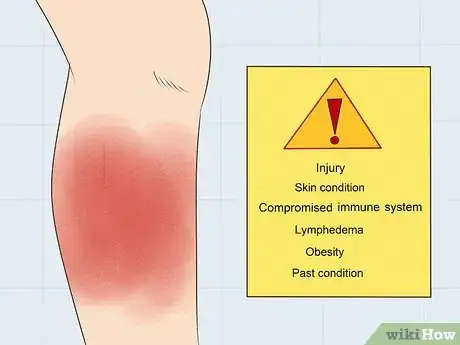
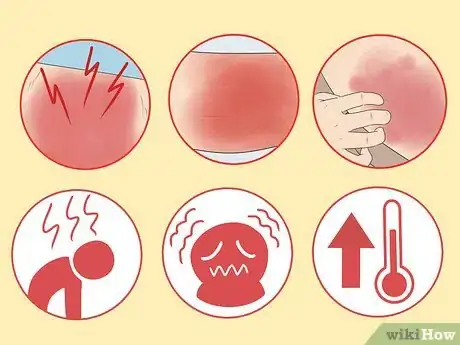
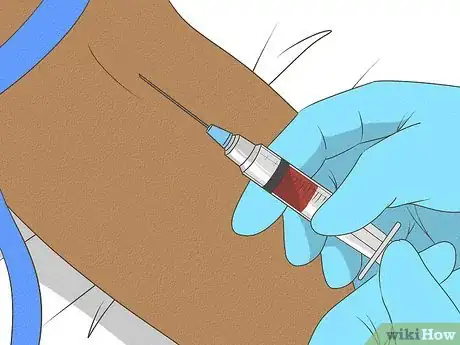
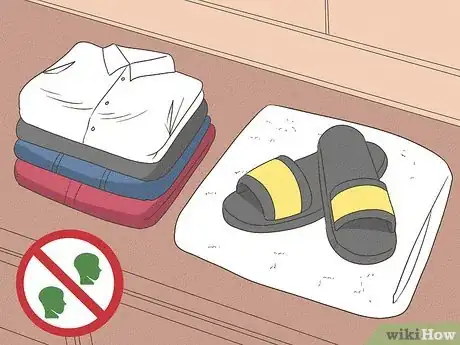
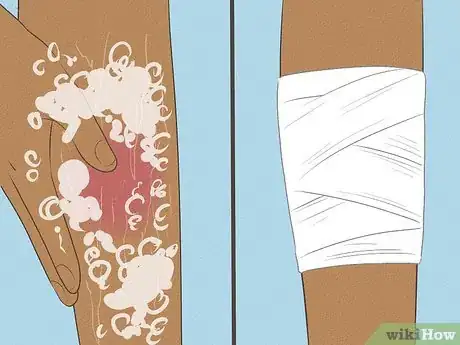
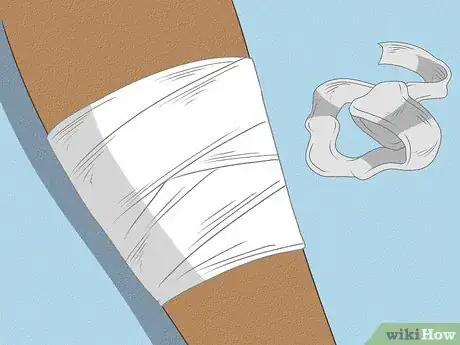

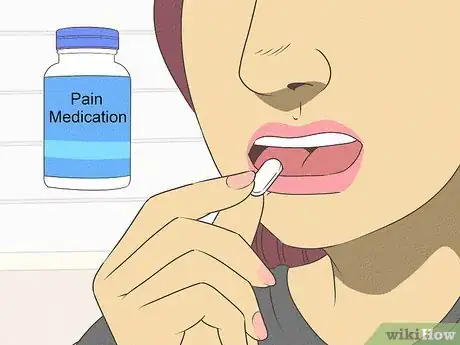

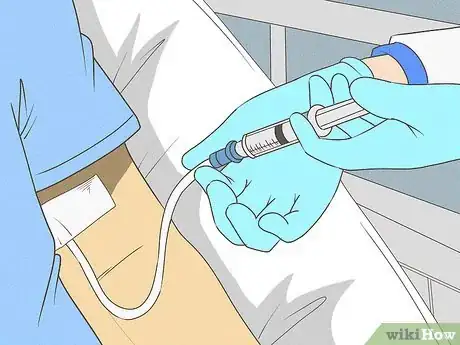
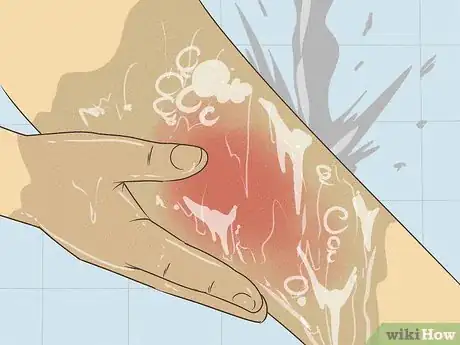
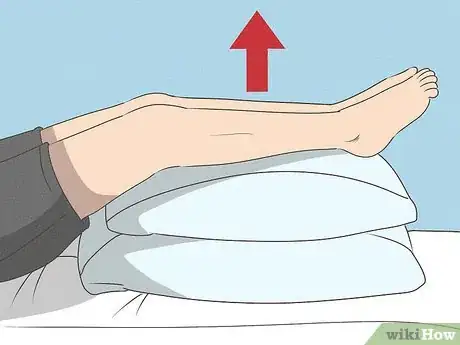
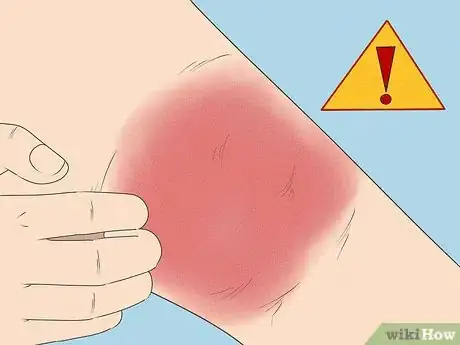




-Step-16.webp)


















-Step-16.webp)



































Medical Disclaimer
The content of this article is not intended to be a substitute for professional medical advice, examination, diagnosis, or treatment. You should always contact your doctor or other qualified healthcare professional before starting, changing, or stopping any kind of health treatment.
Read More...